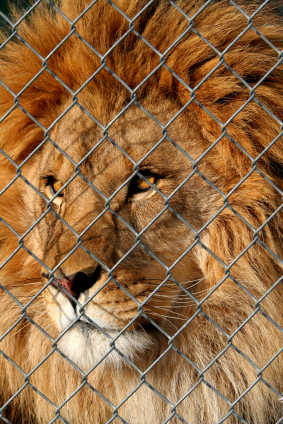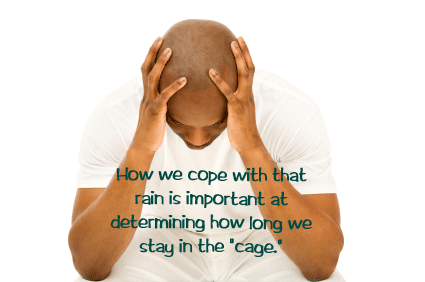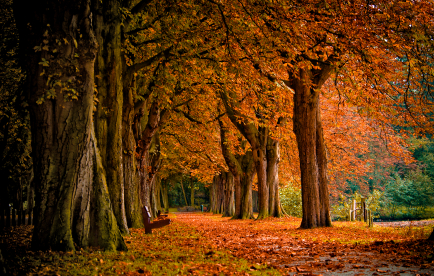
When I was a child in the 1950s, I remember going to a local zoo and watching the lions and tigers pace back and forth inside their concrete and steel cages……back and forth, back and forth. Even at that tender age I felt a sadness and sympathy for those magnificent animals. They were confined not to their liking and unable to do anything about it! I wondered if they were sad, angry or depressed. I sensed their restless unhappiness. I did not like those zoos.
As an adult, I realize that those poor animals could not have been happy or healthy. I’m grateful that zoos today realize this and are more humane and cognizant of the psychological needs of the wildlife they harbor by providing more space and hospitable habitats.
 Sadness
Sadness
Yet, those caged animals’ situations closely parallel many people’s during the times when they are also trapped by unhappy situations – such as the painful loss of a loved one or an important possession. I think grief can be likened too to the Fall and Winter seasons in both Nature and to our own lives– a time when things begin to die and life and warmth seem to disappear. Because we are also spiritual beings, we may experience grief from mistakes we’ve made that separate us from God.
This seasonal and mood change is a normal process in the natural world. Into everyone’s life some rain must fall. Do we have a good rain coat? Or do we get saturated, miserable and sad? How we cope with that rain is important in determining how long we stay in the “cage.”
JOY
Joy in our lives can also be likened to the spring and summer season. When our natural habitats return to life after the dead winter season, greenery reappears and flowers are in bloom. All is going well and life seems wonderful! What colorful beauty, aromas and bird songs abound then! How glorious and full of joy as the earth erupts with vitality, new life and creativity!
So it seems in our lives when everything is going our way. Life is good and don’t we wish it could always be so! Yet, would this become boring after a while?
 A Time to be Sad A Time to be Joyful
A Time to be Sad A Time to be Joyful
According to Ecclesiastes, there is a time for “grieving” and “rejoicing” if we are to be healthy and productive. Both are meant to shape and mold us into stronger, more balanced persons – physically, spiritually and psychologically.
How does Nature handle its Falls and Winters? It doesn’t stay Fall or Winter for too long; instead, the natural world moves through those times and onto new growth, life and beauty, next spring and summer.
People spend a lot of money on drugs and psychiatrist or psychologists to overcome illnesses such as depression but miss the obvious, more natural solution = return to Nature and to God. Giving flowers at a funeral has been a traditional way to soothe troubled, saddened spirits. Why is that? The  beauty of these gifts from Nature can lift us out of grief and present us with new life and beauty that seems to dismiss the darkness and sadness.
beauty of these gifts from Nature can lift us out of grief and present us with new life and beauty that seems to dismiss the darkness and sadness.
We’re not meant to dwell too long in sadness or in grief which can lead to depression. So, what’s the solution? The solution is opening up the windows of our hearts and souls to let in the fresh air and getting rid of the old and stale. Often this takes the form of acceptance and/or reconciliation. That usually leads us to letting go and the act of forgiveness whether it be with our God, our spouses, our friends, our society or someone who has injured us.
Let us rediscover the comfort and love that God offers and once again, the Joy.



